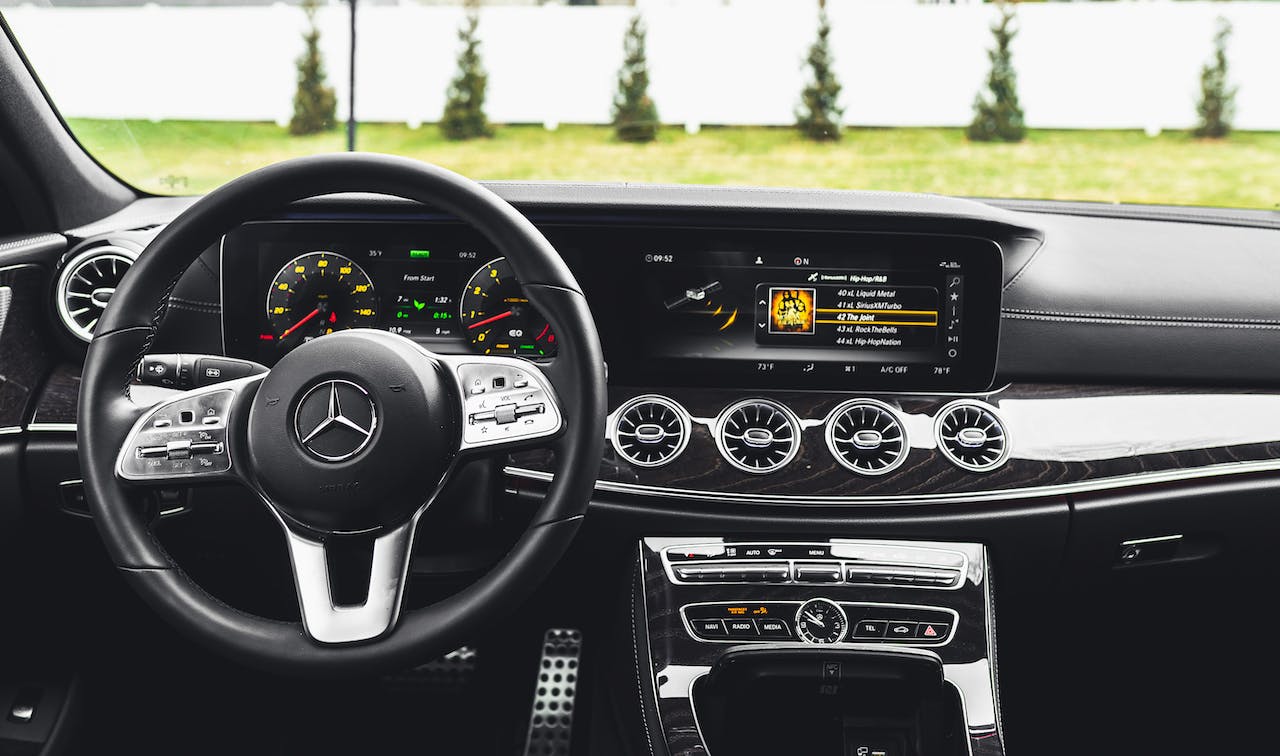In the rapidly evolving world of automotive technology, the integration of the Internet of Things (IoT) has emerged as a revolutionary force, reshaping the way we perceive and interact with our vehicles. This article delves into the profound role of IoT in cars, exploring its intricacies, its impact on the driving experience, and the implications it holds for the future of the automotive industry.
Post Content
ToggleIntroduction:
The Internet of Things (IoT) in cars signifies a paradigm shift in how vehicles operate and interact with their surroundings. At its core, IoT in cars involves the incorporation of smart, interconnected devices and sensors that gather real-time data, creating a network of information that enhances various aspects of the driving experience. This transformation goes beyond mere convenience; it is a fundamental change in the way we engage with our vehicles.
How IoT Works in Cars?
Integration of Sensors and Connectivity
Central to the functionality of IoT in cars is the integration of sensors and connectivity. These sensors, strategically placed throughout the vehicle, collect a myriad of data ranging from engine performance to driver behavior. This data is then transmitted through a sophisticated network of interconnected devices, creating a dynamic and responsive web of information.
The beauty of this interconnected system lies in its ability to provide a holistic view of the vehicle’s health and performance. Engine diagnostics, tire pressure monitoring, and even tracking driver habits become seamless, contributing to a comprehensive understanding of the car’s condition.
Communication Between Vehicle Components
IoT fosters seamless communication between different components of a vehicle. The engine can communicate with the braking system, and the navigation system with the entertainment console, creating an integrated driving experience. This level of communication not only improves performance but also opens avenues for innovative features and functionalities.
Imagine a scenario where your car, aware of your morning routine, suggests an alternate route based on real-time traffic data. Such dynamic adjustments, made possible by IoT, not only enhance the driving experience but also contribute to overall efficiency.
Enhanced Driving Experience:
IoT-Enabled Features for Drivers
The integration of IoT has given rise to an array of features designed to elevate the driving experience. Smart navigation systems, for instance, learn and adapt to your preferred routes, offering real-time suggestions based on traffic conditions. Adaptive cruise control adjusts to the flow of traffic, making long drives more comfortable and less fatiguing.
Safety is paramount, and IoT contributes significantly in this regard. Collision detection systems can alert drivers to potential hazards, and in the unfortunate event of an accident, emergency services can be automatically notified. These features not only enhance safety but also provide a sense of security for drivers and passengers.
Improvements in Safety and Convenience
Beyond enhancing the driving experience, IoT in cars brings notable improvements in safety and convenience. Remote diagnostics allow drivers to monitor their vehicle’s health from the comfort of their homes, providing early warnings for potential issues. This proactive approach to maintenance not only prevents breakdowns but also reduces the overall cost of ownership.
Convenience is further heightened with features like remote climate control. Imagine being able to start your car and set the perfect temperature before even stepping outside. IoT brings these possibilities to life, making every journey more personalized and enjoyable.
IoT and Vehicle Maintenance:
Predictive Maintenance through IoT
One of the transformative aspects of IoT in cars is its contribution to predictive maintenance. Traditional maintenance schedules are often based on generic timelines, leading to unnecessary servicing and potential oversights. IoT changes this by allowing vehicles to communicate their health in real time.
Sensors monitor the condition of various components, from the engine to the brakes, and assess the need for maintenance based on actual usage and performance. This data-driven approach enables predictive maintenance, addressing issues before they escalate and minimizing downtime.
Monitoring and Diagnostics Capabilities
IoT-equipped cars provide advanced monitoring and diagnostics capabilities. When a potential issue arises, the system can alert the driver and, in some cases, communicate directly with the manufacturer or service center. This not only streamlines the maintenance process but also ensures that the right solutions are applied promptly.
For example, if a sensor detects abnormal engine behavior, it can trigger an alert, prompting the driver to schedule maintenance. Simultaneously, the diagnostic data can be sent to the service center, providing technicians with valuable insights before the vehicle even arrives.
IoT in Autonomous Vehicles:
Contribution to Autonomous Driving
IoT plays a pivotal role in the development and functionality of autonomous vehicles. The interconnected nature of IoT facilitates the seamless exchange of data between various vehicle components and with the external environment. This constant flow of information is crucial for the decision-making processes of autonomous systems.
In autonomous vehicles, sensors and cameras continuously gather data about the vehicle’s surroundings. This data is processed in real-time, allowing the vehicle to make informed decisions, navigate through complex environments, and respond to dynamic situations. The synergy between IoT and autonomous driving technologies is propelling us toward a future where self-driving cars become a reality.
Role in Decision-Making Processes
The decision-making processes of autonomous vehicles rely heavily on the data provided by IoT. From identifying obstacles to predicting the behavior of other road users, IoT sensors contribute essential information to the vehicle’s decision-making algorithms.
For instance, a self-driving car approaching an intersection utilizes data from traffic sensors, cameras, and communication with other vehicles to determine the safest course of action. This level of connectivity and data-sharing is fundamental to the safe and efficient operation of autonomous vehicles.
Security and Privacy Concerns:
Addressing Cybersecurity Challenges
While the integration of IoT brings numerous benefits, it also raises concerns, particularly in the realm of cybersecurity. As cars become more connected, they become potential targets for cyber threats. Unauthorized access to a vehicle’s systems could compromise safety and privacy.
Manufacturers are acutely aware of these challenges and are investing heavily in cybersecurity measures. Encryption protocols, secure data transmission, and regular software updates are among the strategies employed to fortify the security of IoT-connected cars.
Ensuring User Privacy in IoT-Connected Cars
Privacy is another significant concern in the era of IoT. The vast amount of data collected by connected cars, ranging from driving habits to location information, raises questions about how this data is handled and who has access to it.
Manufacturers are increasingly adopting privacy-by-design principles, ensuring that user data is anonymized, stored securely, and only accessed for legitimate purposes. Transparency in data handling practices and clear communication with users regarding data usage contribute to building trust in IoT-connected cars.
Industry Adoption of IoT in Cars:
How Automakers Are Embracing IoT?
The automotive industry has wholeheartedly embraced the potential of IoT. Major automakers are integrating IoT technologies into their vehicles, not only in high-end models but across a broad spectrum of vehicles. This widespread adoption is indicative of the industry’s recognition of IoT as a transformative force.
Automakers are incorporating advanced sensors, communication modules, and IoT platforms into their vehicles, creating a foundation for a new era of smart mobility. From enhancing safety features to enabling new business models, IoT is at the forefront of innovation in the automotive sector.
Collaborations and Innovations in the Automotive Sector
The implementation of IoT in cars often involves collaborations between automakers, technology companies, and other stakeholders. These collaborations are essential for developing standardized solutions, ensuring interoperability between different systems, and driving innovation.
For example, partnerships between automakers and tech companies may result in the integration of voice-activated assistants, smart home connectivity, and other IoT features. Such collaborations pave the way for a seamless and integrated IoT ecosystem within the automotive industry.
Consumer Adoption:
Public Perception of IoT in Cars
The adoption of IoT in cars is not solely determined by technological advancements; it is also influenced by consumer perception. Fortunately, the public’s attitude toward IoT in cars is increasingly positive as the benefits become more apparent.
Consumers are recognizing the value of features such as real-time diagnostics, enhanced safety, and personalized driving experiences. As these benefits align with the evolving expectations of modern drivers, the demand for IoT-equipped vehicles is on the rise.
Factors Influencing Consumer Acceptance
Several factors contribute to the growing acceptance of IoT in cars among consumers. The increasing familiarity with IoT in everyday devices, such as smart homes and wearables, has demystified the concept. Additionally, the tangible benefits, such as improved safety and convenience, resonate with consumers’ desire for a connected and efficient driving experience.
Furthermore, as IoT becomes a standard feature in newer vehicle models, consumers are exposed to its advantages through test drives and demonstrations. Positive word-of-mouth and reviews from early adopters also play a crucial role in influencing consumer acceptance.
Future Trends and Developments:
Predictions for the Growth of IoT in Cars
The trajectory of IoT in cars points towards continued growth and integration. Future developments are likely to focus on refining existing features, expanding the scope of IoT applications, and addressing emerging challenges.
Predictions include advancements in vehicle-to-everything (V2X) communication, where cars communicate not only with each other but also with traffic infrastructure, pedestrians, and other connected devices. This level of connectivity is expected to enhance traffic management, reduce congestion, and contribute to overall road safety.
Potential Advancements and New Applications
The future of IoT in cars holds exciting possibilities. Advancements in sensor technologies, artificial intelligence, and edge computing are anticipated to unlock new applications and capabilities. From personalized in-car experiences to advanced augmented reality interfaces, the integration of IoT will redefine the way we interact with our vehicles.
Additionally, the growth of electric and autonomous vehicles is likely to drive further innovation in IoT. As these technologies become more prevalent, IoT will play a crucial role in optimizing charging infrastructure, enhancing energy efficiency, and enabling seamless communication between autonomous vehicles.
Conclusion
As we navigate the interconnected highways of the future, the role of IoT in cars becomes increasingly indispensable. From elevating the driving experience to redefining vehicle maintenance and safety standards, IoT is the driving force behind a new era in the automotive world. The seamless integration of smart technologies not only enhances the capabilities of individual vehicles but also lays the foundation for a connected and intelligent transportation ecosystem.
In the years to come, we can expect IoT in cars to continue evolving, pushing boundaries, and shaping the future of mobility. As technology advances, the integration of IoT in cars is not just a luxury but a necessity, guiding us toward safer, more efficient, and truly connected roads.
FAQs:
Can I retrofit my existing car with IoT features?
Retrofitting IoT features into older vehicles can be challenging and may not yield the same level of integration as in newer models designed with IoT capabilities.
How secure is the data transmitted by IoT-connected cars?
Manufacturers prioritize the security of IoT data, implementing encryption and other measures to safeguard sensitive information.
Do all cars come equipped with IoT technology?
While newer models increasingly incorporate IoT features, not all cars are equipped with this technology. The level of IoT integration varies among different makes and models.
Can I customize the IoT features in my car?
Some vehicles allow users to customize IoT features based on preferences, but the extent of customization depends on the manufacturer and model.
What role do regulations play in the implementation of IoT in cars?
Regulations are evolving to address the integration of IoT in vehicles, focusing on data privacy, cybersecurity, and overall safety standards.
Last Updated on November 22, 2023 by admin

Mac is an Automotive enthusiast. He owns up to 15 vehicles. He deals with Auto problems and shows his skill to Car owners who are seeking any type of Car help.





